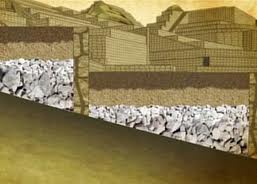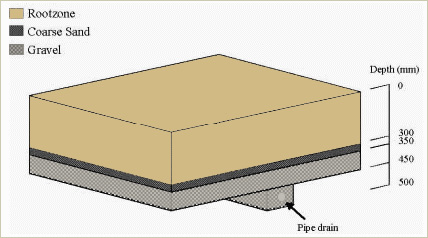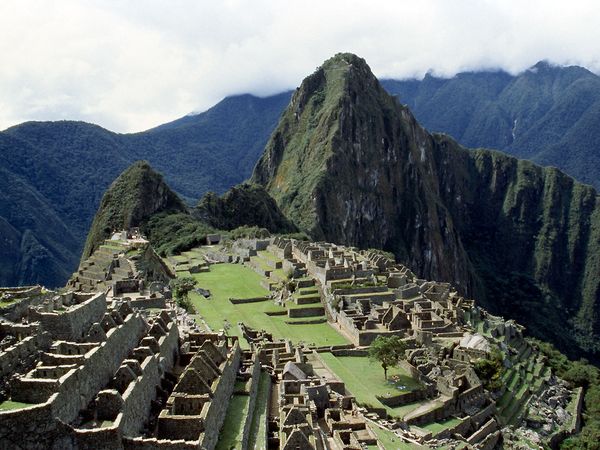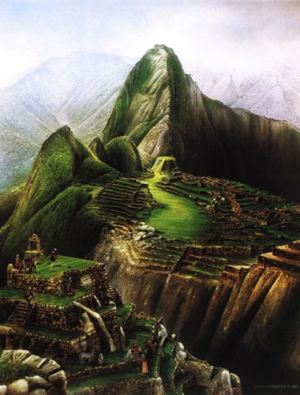Golf Courses and Machu Pichu; A Connection?
Several weeks ago, I found myself channel surfing (a common, last ditch effort before going to bed). I happened to stumble upon a documentary program on PBS on Machu Pichu. I have always had a strong curiosity and desire to visit this Incan ruin someday, one of the New Seven Wonders of the World…so I stopped clicking and settled in for pure entertainment. Surprisingly though, the message was not centered on the watered down touristic exploration of a rediscovered ancient civilization in the Andes or in the mystery that surrounds its existence…in fact, the message was most surprising…and particularly relevant to me.
So you’re probably wondering….ok, so how does this connect in any way with golf courses, Drew? And that’s where it gets interesting. This program was all about the amazing agricultural terraces, numbering over 700, which are carved into the mountainside. Come to find out, the Incans were brilliant engineers, and their monument amidst the mountains is recognized as a public works achievement by water engineers all over the world!
Ok, PBS, you’ve got my attention now! Not only is this place a big time stop on my bucket list, but there's also an underlying value to this. Let’s talk drainage! I’m all about drainage. You know the three most important aspects of building a good golf course? Yeah….1) drainage, 2) drainage and yes, 3) drainage. A wet golf course is a closed golf course, and that is why drainage is so inherently part of golf course construction.
As it turns out, the site featured a complex water system that not only kept the mountain retreat drained but also irrigated the bountiful vegetation. Who knew? Drainage and irrigation!
Machu Picchu was built approximately in 1450 — before the arrival of the Spanish Conquistadors– on the precariously steep slopes of the Andes Mountain range. While Machu Picchu is thought to have been occupied mostly by nobility, it could have accommodated upward of 1,200 people at one time based on the size, infrastructure and amenities of the village. And for reasons still unknown today, Machu Pichu was abandoned in 1540 and sat unoccupied for 450 years until being rediscovered again in the early 20th century.
It is believed that the reason it survived four and half centuries of neglect has as much to do with the drainage infrastructure as anything else, according to Ken Wright, a hydrologist and civil engineer, who has studied the waterworks and other engineering achievements of Machu Picchu since 1994. (He authored “Macchu Picchu: A Civil Engineering Marvel”).
Wright states, “The drainage at Machu Picchu and its special characteristics represent the secret of its longevity. This has long been overlooked by archaeologists and scientists. Without good drainage and foundation construction, there would not be much left of the royal estate of Emperor Pachacuti. The buildings would have crumbled and many of the agricultural terraces would have collapsed due to the high rainfall, steep slopes, slideprone soils, and settlement.”
Wright said the drainage system at Machu Picchu has eight major components:

- A centralized main drain serving to separate the Agricultural Sector from the Urban Sector;
- Agricultural terrace surface drainage with good longitudinal slopes to formal surface channels integrated with access stairways or to the main open drain;
- Subsurface drainage of agricultural terraces at depth, typically consisting of ungraded rock chips and stones overlaid with a layer of gravel and, above that, a layer of somewhat sandy material; (This one is important!)
- Positive surface drainage of urban grassed or soil areas to drain the runoff from the many thatched roof structures and plaza areas. In some places, thatched roof drip channels were cut into rocks;
- Urban and agricultural drainage channels combined with stairways, walkways, or even temple interiors;
-
 Deep subsurface strata under plazas of rock chips and stones to allow the plazas to receive and infiltrate runoff from tributary areas;
Deep subsurface strata under plazas of rock chips and stones to allow the plazas to receive and infiltrate runoff from tributary areas; - A well-conceived and strategically placed urban area system of 129 drain outlets placed in the numerous stone retaining and building walls;
- Subterranean caves strategically used for drainage discharge, with relatively free subsurface flow via natural underlying permeable deposits of granite rock falls.
For those who are familiar with the principles of drainage as it relates to typical golf course applications, I hope you are able to recognize some connections. In fact, as I examine the overall concept at Machu Pichu, the approach bears an eerie resemblance to golf course installations, including the perched water table concept that is behind our modern day USGA green construction!
Until a few weeks ago, I had never before been exposed to any reference of the Incans drainage achievements. But after looking at their mountainous applications, it might be reasonable to conclude that, in some crazy way, we have the Incans to thank for such amazingly successful putting greens today! And their foresight into the collection, transfer and re-use of water is simply amazing - and we're still putting these concepts to good use today. With water being such a scarce and valuable resource, the golf industry has been at the forefront of finding better ways to address water management issues....issues that the Incans were keenly aware of over 500 years ago!
Now, if Machu Pichu were also found to be the origin of the game of golf, then we would really have something special! As it turns out, Machu Pichu is still very much on my bucket list, but its also a potential business research trip now as well.



Comments